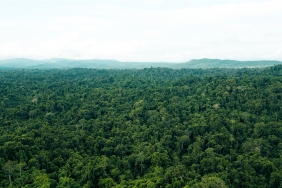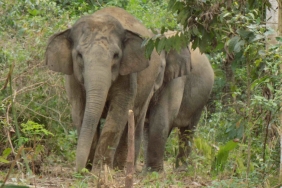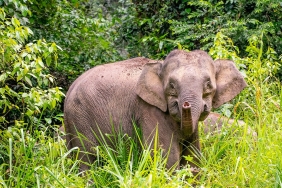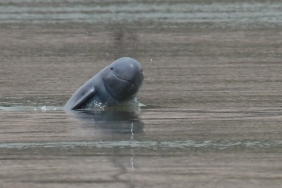CAPACITY BUILDING FOR HONEY FARMERS IN SEDAU VILLAGE, LOMBOK
By: Natalia Trita Agnika
On Wednesday (27/12/2017), around 30 participants from the Community Forest (HKM) group and members of the Sesaot Community Forest Conservation Group (KMPH) participated in honey farmer capacity training activities at the KMPH Secretariat, Sedau Village. Suadi, a honey cultivation assistant, provided several training materials, including techniques for transferring trigona bees into honey stups, techniques and methods for harvesting trigona honey, and processing techniques for bee pollen which is found in trigona honey hives.
Muhammad Ridha Hakim, Small Island Partnership and Governance Leader WWF-Indonesia said that the training activity aims to increase the capacity, knowledge, and skills of KMPH farmers in honey cultivation. This is the first time the farmers have participated in honey cultivation training as well as their first experience in honey cultivation. The participants felt greatly helped by the technical training they had received.
Meanwhile, the construction of the honey production house has also been underway. The construction process of the honey production house began in February 2018. At that time, the main obstacle to the construction of the production house was the high rain intensity. The land for the construction of the production house is land donated by the Chairman of KMPH (an area of 4 are or about 0.04 hectares). Now, the building is standing.
In addition to the honey production house, two units of honey stup houses have also been built. What is the difference between a honey production house and a honey stup house? A honey stup house is a building made of wood to store honey stups to be cultivated. One honey stup house can accommodate 100-150 honey stups. The construction has been done in advance, since October-November 2017. Meanwhile, a honey production house is a permanent building that is used for production processing, post-harvesting, and packaging of honey cultivation products. In addition, the production house is also used as a place for the implementation of the learning process among farmers to improve understanding, knowledge, and skills in the honey cultivation business.
The honey production house initiated by WWF-Indonesia is very helpful for the community in Sedau Village in increasing the economic benefits of Non-Timber Forest Products (NTFPs) so as to reduce and prevent encroachment in protected forest areas. Every week, the KMPH holds regular meetings to discuss work plans for forest area management, including discussions about honey cultivation.
Thank you to WWF Supporters who have sincerely helped the construction of honey production houses through the "Honey Production House" donation program. Your donation has contributed to improving the welfare of farmers around the Sesaot Forest area and at the same time preserving the forest. Those of you who still want to help protect the forest through the MADU PRODUCTION HOUSE can contribute through donations at wwf.id/honey production house.
For more information, or if you would like to be contacted by WWF-Indonesia Telemarketing team, please contact the Contact Center at (021) 5761076 or by sending an email to [email protected] (write "Rumah Produksi Madu" as the title of your email).
The development of honey bee cultivation supported by WWF Supporters is currently integrated into the work plan of the West Rinjani Forest Management Unit (KPH). Thus the activities carried out by the KMPH in the future will get support from the government through the KPH.





